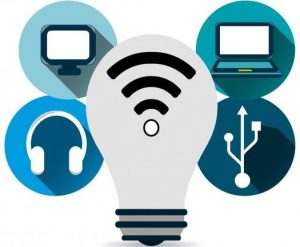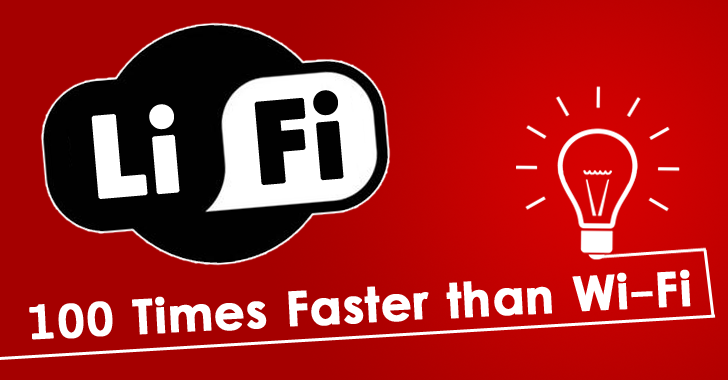The advent of Wi-Fi networks brought about a radical shift in how people communicate and make the most of entertainment options through internet. At present, Li-Fi (light fidelity) is actually taking technology to another level. Not just that, it is likelier to do it faster while also signalling significant positive implications for the people across the world.
Light Fidelity (Li-Fi) is a Visible Light Communications (VLC) system, which runs wireless communications travelling at high speeds. It is a bidirectional, fully-networked mobile communications technology similar to Wi-Fi and uses visible light communication, such as near ultraviolet and infra-red light, to transfer data. Instead of using radio frequency, Li-Fi uses LEDs to transmit data on the rationale that LEDs require lesser power and can be easily powered by a regular ethernet cord.
Inventor of Li-Fi
The term Li-Fi was first coined by German Professor Harald Haas during a TED talk in the year 2011. Haas delineated the idea of utilizing light bulbs as wireless routers. In 2012, he set up his company pureLiFi to promote Li-Fi technology and to be the leader in VLC technology. Li-Fi uses household LED light bulbs to transfer data, boasting speeds of 224 gigabits per second.
How Li-Fi Works?
Li-Fi transmits data electromagnetically and runs on visible light. It houses a photo detector to receive light signals along with a signal processing component to convert data into streaming content.
The current of electricity, which is supplied to LED light bulb, can be dimmed and dipped, moved up and down at high speed, without being visible to naked eye. With the help of signal processing technology, the data is fed into LED light bulb, it then transfers data at rapid speed (embedded in beam) to photo detector (photodiode). The small changes in quick dimming of LED light bulb are then converted or changed by receiver into electrical signal. The electrical signal is then changed back into binary data stream in the form of web, audio and video applications that run on internet-enabled devices.
What Li-Fi Means To Big Data and Internet of Things (IoT)
The tremendous demand for transmission of large volumes of data and Wi-Fi is actually straining the current technologies and systems. With massive growth of mobile devices across the globe, more than 10 billion mobile devices would exchange 36 quintillion bytes of data and information each month. While these are just mobile devices, you also need to take into account big data servers, IoT devices and traditional computers that also transfer high volumes of data every month. With the help of Li-Fi, scientists will be able to transfer data much faster than conventional Wi-Fi.
Haas has also pointed that smart lights can be easily powered by solar cells batteries and these lights do not create electromagnetic hindrance like the way Wi-Fi does, entailing it could have significant applications in locations such as research and development, data compiling, healthcare facilities, and so on.
Today, IoT is in a position to monitor everyday aspects of life such as water, electricity, garbage, traffic, wind speed, temperature, and air quality, among others. This technology is said to have numerous nodes and each node is expected to be wireless. This, in fact, poses incredible opportunities for businesses that can adapt and make good use of the emerging connectivity. It is the amalgamation of the large-scale use of sensors with consistent network connectivity, which actually facilitates new business models and practices to be based on Big Data.

In early stages, sensory data and information have a high chance to be low data rates needing minimal infrastructure improvements. However, it must be noted that the more wireless connectivity people have, the more they want. Today, wireless communications industry has accepted the need to boost wireless capacity by 1,000 to 10,000 times. However, the experts have to realize the fact that they have to increase the energy output of these systems by 1,000 times as well. Dr. Hamadou Toure, General Secretary for International Telecommunications Union (ITU) emphasized about the stringent adaptability and capacity requirements that should be clearly outlined for wireless communications industry. Trade analysts believe that new wireless solutions, which function in conventional part of radio spectrum, would come forth over the years.
How do people maintain network connectivity in new age and how can IoT become reality for the people?
This is exactly where Light Fidelity finds its apt place. Li-Fi can provide greater wireless capacity using the energy we spend on everyday lighting. It will allow greater connectivity using slightly more power while satisfying internet users’ demands for more wireless data. Moreover, lights are ideally placed to host several sensors, from humidity, to wind speed, to temperature, etc. This is where lighting industry is proceeding with its different forms of light as a service business model.
In the time to come, Li-Fi will not only become an accepted form but people will be able to explore real devices with real applications that use it. People would be able to install Li-Fi at any place such as tourist information kiosks, street lights, train stations, and bus shelters, where Li-Fi could get the required light to enable data transmission.
Faster data transmission and connectivity promised by Li-Fi is an encouraging space for businesses across the world. The integration of big data, IoT and Li-Fi will provide various business opportunities for businesses and individuals alike.




















